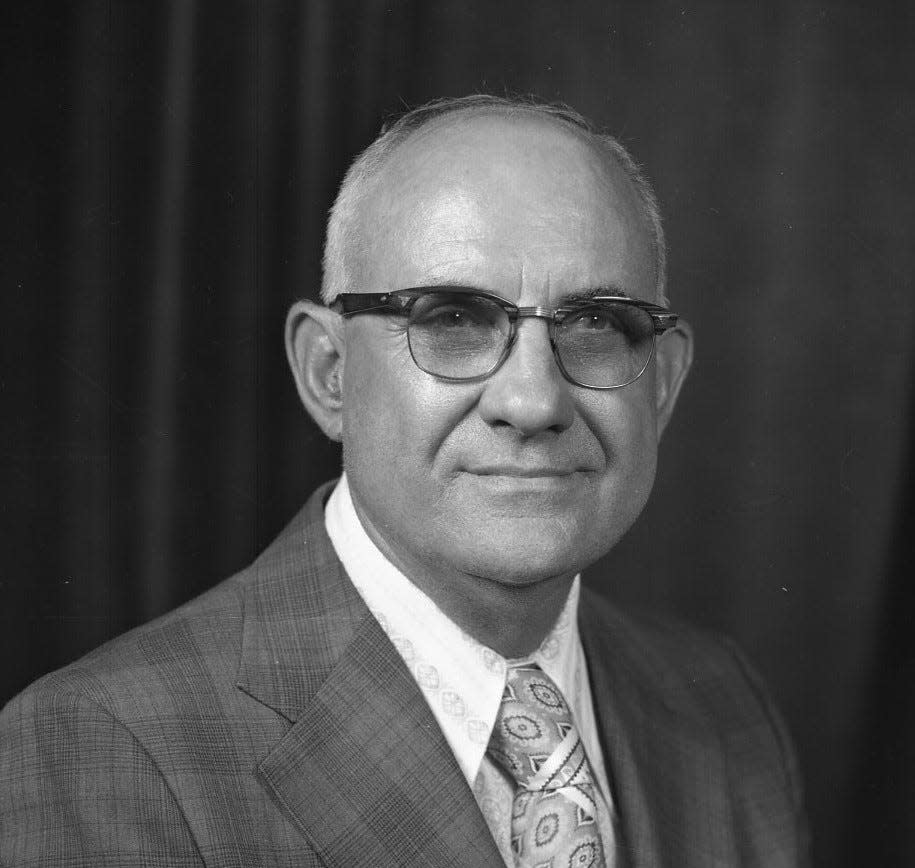Weston Wednesday Revisiting the Pre-settlement Days of Washington County

Editor's Note: In collaboration with the Bartlesville Area History Museum, the Examiner-Enterprise has revived the late Edgar Weston's 'Revisiting the Past' columns that ran in the newspaper from 1997-99. Weston's columns recount the history of Bartlesville as well as Washington, Nowata and Osage counties.
Indian Territory was a vast sea of grass in 1868 when Lewis Allen Bivin arrived, from Ft. Smith, Ark. Settlement had not came into what is now Washington County.
A few settlers had come before the Civil War, a little cluster on Butler Creek. A few on upper Caney River and a family or two east of Caney River near present Collinsville were all that appear to be here before the Civil War.
Lewis Allen Bivin was born in Kentucky on Oct. 11, 1841, the family moved to Tennessee. He decided to go with his parents John Allen Bivin, formerly from England, and his mother Elizabeth, formerly from Ireland, by wagon train to California. However, he quit the wagon train at Knob Knoster, Mo., and enlisted in the Confederate Army on Jan. 2, 1862, at Springfield, Mo.
He was assigned to Company H. 2nd Missouri Infantry. He was captured on May 1, 1863 by the 3rd Division, 17th Army Corp, and confined to Military Prison at Alton, Ill. He was exchanged June 12, 1863 and returned to his former unit, and was recaptured on Sept. 5, 1863 and confined in Camp Morton, Indianapolis, Ind., Military Prison. Bivin was engaged in the Battles of Elk Horn Tavern, better known as the Battle of Pea Ridge, Ark., Farminton, Iuka, Corinth, and Grand Gulf. He was captured and again placed in Camp Morton, Indianapolis, Indiana, Military Prison. He was released March 24, 1865 and returned to Springfield, Missouri.
The Civil War over, Bivin moved to Ft. Smith, Arkansas in 1866 and worked in an ax handle factory. He decided to look over the Indian Territory and located for a time at Tahlequah, I.T., then Chouteau and on to Skiatook.
From there he located on a creek southeast of present Ramona, where he ran a few beef cattle and some steers.
Katherine Cheek Timberlake was born in Houston, Georgia and came with her parents in the Daniel Wagon Train made up of Cherokee Indians and located in the Cherokee Nation of Indian Territory. Katherine Cheek Timberlake was under one year old when they arrived in 1839.
On May 12, 1872 Lewis Allen Bivin and Katherine Cheek Timberlake were married by Rev. McSpadden, a Circuit riding Methodist minister, at a place near Dog Creek, Indian Territory, Cooweescowee District of the Cherokee Nation. Lewis was about 31 years old and Katherine was about 33 years old. Cherokee Indians marrying whites had to have permission to marry. Lewis Downing, chief of the Cherokees granted permission. Marriages this early between whites and Cherokee usually led to adoption by the Cherokee Tribe.
Her father was a full blood Cherokee Indian originally from Cherokee, North Carolina. Her mother was of French descent from New Orleans, Louisiana. Katherine Timberlake Bivin died August 12, 1888 and was buried, on the Bivin Ranch. The Bivin Cemetery probably contained as many as eighteen burials. When the Ramona Cemetery was plotted, Katherine Bivins and several more were moved to Ramona Cemetery. Only three grave stones remain, but a dozen or more sunken graves indicate the removal of burials and a few more places indicate graves, but no stones or markers.
One grave with a stone is Uriah Pitman, son of B.F. and Hannah, born 29 January 1875, died 20 March 1896 (this is believed to be Bud Pitman, the outlaw, killed in a shootout near McClellan Ford, on Caney River, by Scott Bruner, Deputy U.S. Marshal.
Bivin was adopted by the Cherokees and a short time later, leased 13,000 acres east and southeast of present Ramona, through the Cherokee Tribal Council of the Cherokee Nation. The Creek flowing through this land was named Bivin's Creek.
As stated in the previous article Bivin and the neighbor rancher across Caney River, Charley McClellan, joined in an effort to develop Quarter horses. They also jointly owned a large herd of steers, using the brand 17. In the big blizzard of 1886, they lost their herd of steers, they froze to death. The blizzard of 1886 froze to death whole herds of cattle across Indian Territory, Kansas, and Arkansas. It was the most devastating storm on record.
Lewis Bivin and Charley McClellan did not restock their ranches with cattle but turned to the development of the quarter horse and engaged in very large farming operations.
Records on file from old tax records, Library, Cherokee Nation, Coowescowee District, reflects in the fall on 1890, Lewis Allen Bivin adopted white, leased 12,550 acres of grass and farm land in the valley of Bivin's Creek and the Caney River bottoms, Brand 17 used, 343 acres enclosed in cultivation, 7 dwellings, 14 other structures, value of improvements $3,100.00 personal tax paid on the following 5600 bushels of corn, 300 bushels Irish potatoes, 200 bushels of turnips, 50 bushels of peaches, 50 bushels of sweet potatoes, 400 lb. of butter, 200 gallons of sorghum, 295 fruit trees, 110 hogs, 8 milk cows, 10 saddle horses, 68 work horses and mules, 50 domestic fowls, 3 plows, 2 machinery plows, 1 reaper, and mower, 2 farm g 1 clock, 800 steers, joint ownership with Charley McClellan.
We notice in this listing that they were running 800 steers even though they had not restocked their ranches after the 1886 blizzard. Perhaps the winters had moderated and they had restocked by 1890.
This article originally appeared on Bartlesville Examiner-Enterprise: Revisiting the Pre-settlement Days of Washington County

